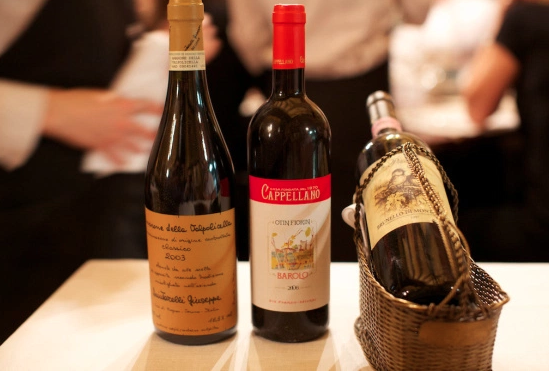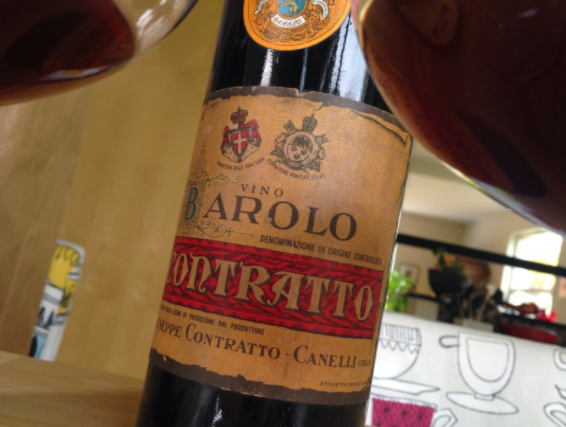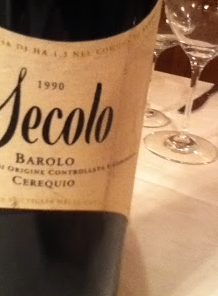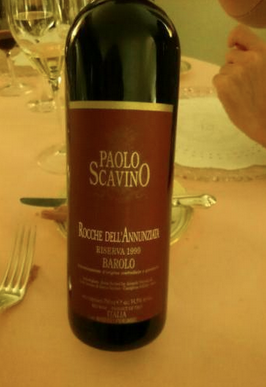Tuesday, October 4, 2016
Thursday, September 29, 2016
Bottega del Vini The Super Bowl of Wine
The Board at BOTTEGA del VINO

.

Saturday, September 24, 2016
Contratto Barolo
by Daniel Bellino Zwicke
How Robert Parker Destroyed WIne
Barolo Paulo Scavino
Well, anyway la Pizza Fresca makes some great Pizza. They also have a full menu of Antipasti, Pasta, Meat, Fish, and Poultry and they have one great wine list. Besides the great Pizza, La Pizza Fesca is realy into wine, and is in fact one of the top Italian Wine focused restaurants in New York. They have a great wine list that is very extensive and world class. And like they did last night that have many great wine dinners each year. The wine dinner I attended this night was hosted by Elisa Scavino who is one of Enrico Scavino 's two daughters working with him in the family wine business in Peidmont. Well the dinner was awesome, we started with Beef Carpacio, followed by some awesome Pizza, Pizza Funghi (Mushrooms) and Pizza Bianco with Fontina Cheese, Black truffles, and Prosciutto. The Pizza was amazing. We drank Paolo Scavino Barbera and Nebbiolo Langhe with the Carpacio, and ewere quite fortunate to have a couple of Paolo Scavino 's fabulous Barolo with the Pizza .. Yes, with the Pizza we drank Scavino's Barolo Carobric 2000 . This wine was phenominal. It was in perfect balance, full of great fruit and earthy flavors of Truffle and Mushrooms. You couldn't ask more from a great Barolo from one of the great Barolo vintages of all-time in the 2000 .. Lucky we were at the dinner to follow this great Barolo with Scavino's Barolo Bric del Fiasc 1998, 2000, and 2010 . Needless to say, they were all great, and drinking quite nicely.
We were then treated to an amaing line-up of an amazing 3 Vintage Vertical Tatsing of Paolo Scavino 's Barolo Reserva Rocche dell' Annunziata. The vintages we had were 3 of the greatest Barolo vintages of all-time in the 1990, 2000, and 2001 ... Wow what a treat? It was a great night of socializing, drinking great Barolo accompanied with the awesome Pizza, Pasta, and Bue al Barolo (Beef Briased in Barolo Wine) and our gracious host Alisa Scavino talking about all the great winew we were drinking and of the histroy of the family's winery founded by her grandfather Lorenzo Scavino . Bravo Elisa !!!!
Friday, September 23, 2016
BAROLO
The aromas and flavours of Barolo
If you’re wondering “what does Barolo taste like?” the best thing to do is open a bottle and take a sip. Once you’ve tried it, you’re unlikely to forget the experience.
Barolo is a powerful wine with lots of tannins, and experts sometimes call its aroma “tar and roses”. Each mouthful brings a world of flavour. It starts with notes of liquorice, rose petals, blueberries and prunes, mingling with black pepper and cinnamon spices. This is joined by rich dark chocolate, old leather and sweet tobacco.
Barolo is a red wine with complex and powerful aromas. Dry, and very rich in tannins, this wine benefits from ageing as its distinctive taste gets even more refined and sophisticated over time. It is best to keep Barolo for at least 7-10 years after harvest before opening it.
Barolo is made from 100% Nebbiolo grapes, grown in a small area of Piedmont – or Piemonte in Italian – in North-West Italy. It is only made in and around eleven comunes (villages), which are shown on the map of the Barolo DOCG below. The most important villages, which are thought to produce the best examples of Barolo, are:
La Morra
Castiglione d Faletto
Monforte d' Alba
Serralunga d'Alba
There are 181 vineyards in Barolo known to produce wines of superior quality. They are officially called menzioni geografiche aggiuntive (additional geographic mention) or MGA. Their names can be added to the label to show superiority. Unofficially, they’re known as the cru vineyards of Barolo. We delve into key communes and crus later in this article.
As of 2018, there were 1,928 hectares of vineyards in Barolo. That year, winemakers produced approximately 11.67 million x 75cl bottles of Barolo wine. To put this number into context, there was eight times less Barolo produced than Chianti (91 million bottles), and slightly less than Amarone (14 million bottles)
Barolo DOCG wine must be made according to the winemaking rules, or “wine laws”, officially known as the Disciplinare Di Produzione[4]. They set out very strict rules: from how many grapes can be grown, to what’s the permitted levels of acidity, to how the Barolo wine must be aged, and much much more. You’ll find a whole section dedicated to Disciplinare later in this guide.














































